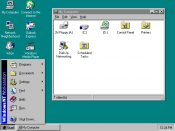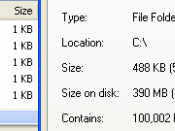IntroductionA computer file system described most simply is a process for organizing and storing computer data files. The file system, at the very least, must ensure that files are stored safely and are readily available for retrieval. At a minimum a file system must allow the operating system to write new files of data to the storage disk while at the same time protecting files previously stored, ensuring they do not get over written. And finally, a file system must make the stored files easy to find and quick to retrieve.
A discussion about Microsoft's file system requires a review of the history related to how these file system were introduced and the needs they were trying meet. The Microsoft operating systems have come to dominate the business and personal computer market. As they were beginning with their very first operating system it was necessary for them to develop a file system.
And over the years Microsoft has changed their file system as Windows has become more complex and computer hardware becomes faster and more powerful.
FATThe file system provides the environment for working with files and folders. Windows uses FAT12, FAT16, FAT32 and/or NTFS with NTFS being the best choice.
The file system FAT (File Allocation Table) originated in the early1980s. FAT file system was the only system supported by the MS-DOS. Being developed with floppy disk in mind was appropriate for drives smaller then that of 500 Kb in size. Technology has allowed for the enhancement to support larger media.
"Currently there are three FAT file system types: FAT12, FAT16 and FAT32. The basic difference in these FAT sub types, and the reason for the names, is the size, in bits, of the entries in the actual FAT structure on the disk. There are 12 bits...


